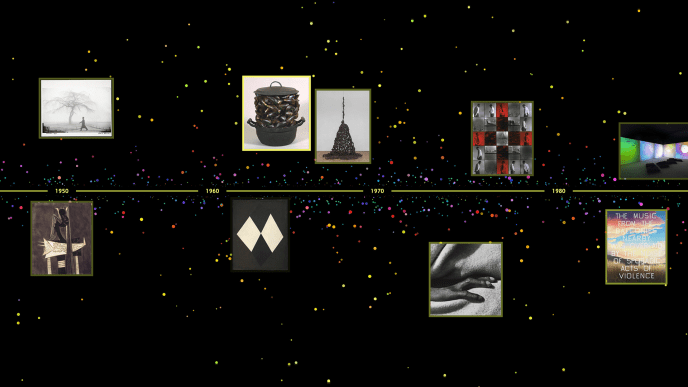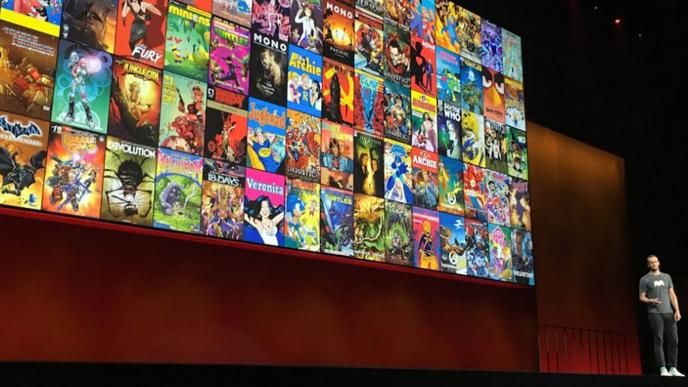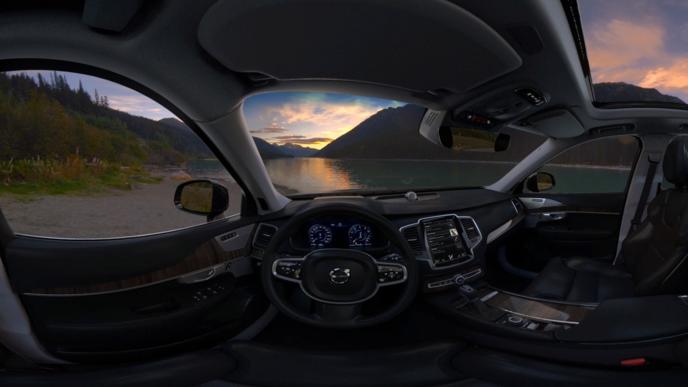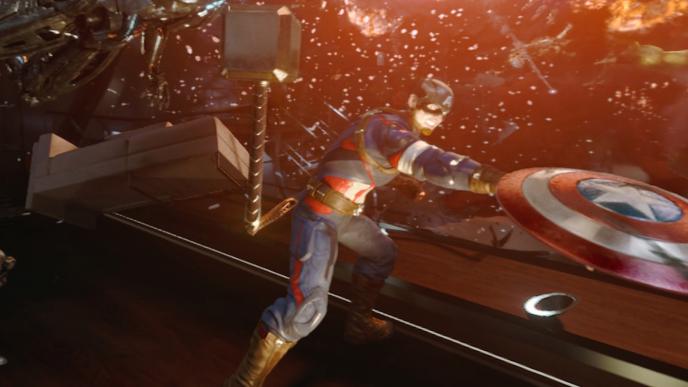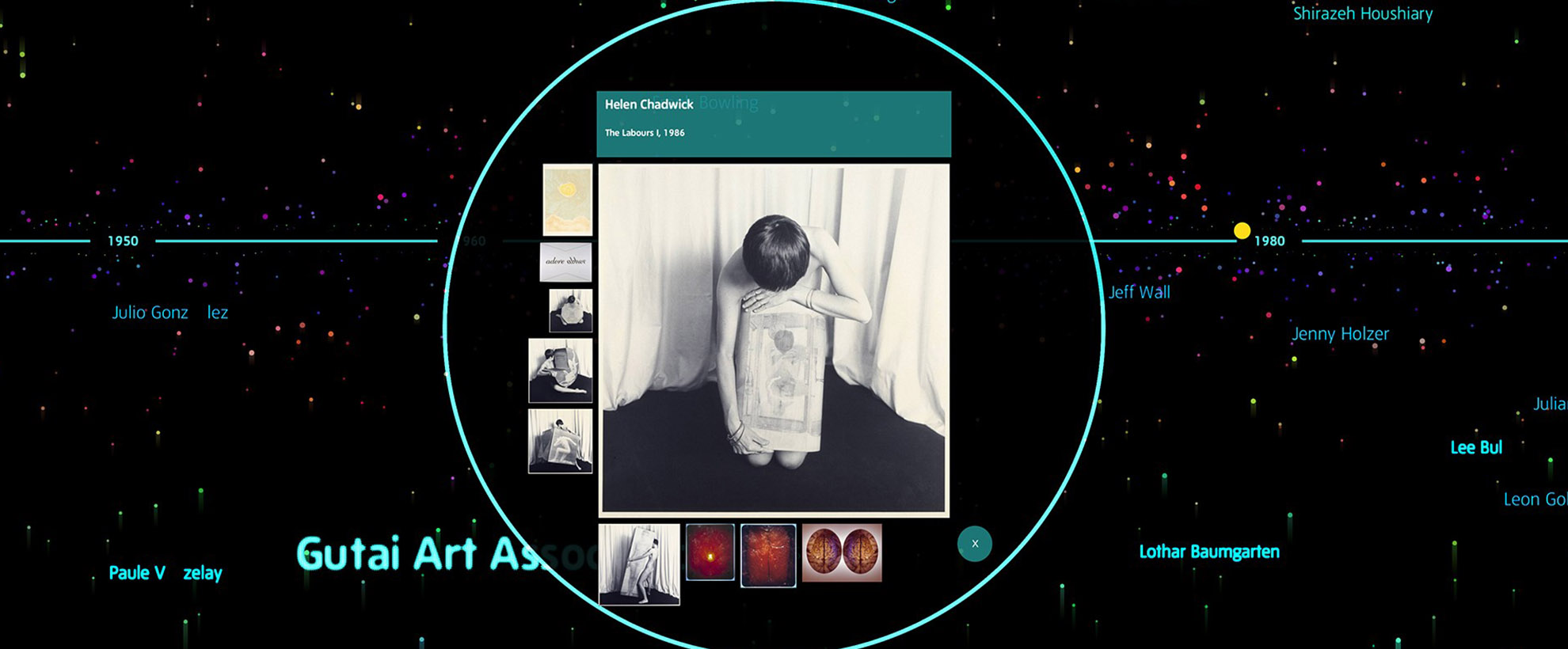
Timeline of Modern Art
The Digital Signage team at Framestore designed and built a brand new interactive timeline for Tate Modern, which takes pride of place in the Clore Learning Centre on the gallery's Level 0. The Timeline of Modern Art is a significant update of the previous static installation in the gallery, allowing millions of visitors instant access to a vast number of artworks previously hidden in the Tate's impressive and rich archives.
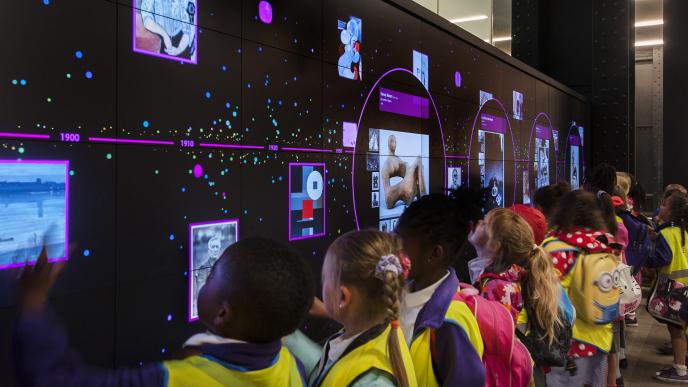
Drawing a Crowd
Tate Modern welcomes around 5 million visitors through its doors each year, and shows work drawn from Tate’s vast collection. Framestore’s challenge was to take the massive amount of data from over 3500 of these artworks and create a fun, interactive and exploratory experience for a hugely diverse audience.
Part of Bloomberg Connects – Tate Modern’s range of digital tools for visitor engagement – the finished Timeline of Modern Art is a beautiful and robust installation that allows visitors to discover the collection in a completely new and exciting way.
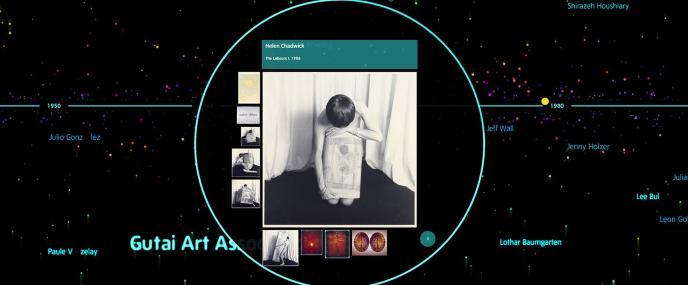
It was fantastic working with Framestore on the Timeline, creating something really innovative and user-friendly, and being able to open up the history of modern art in an exciting way.
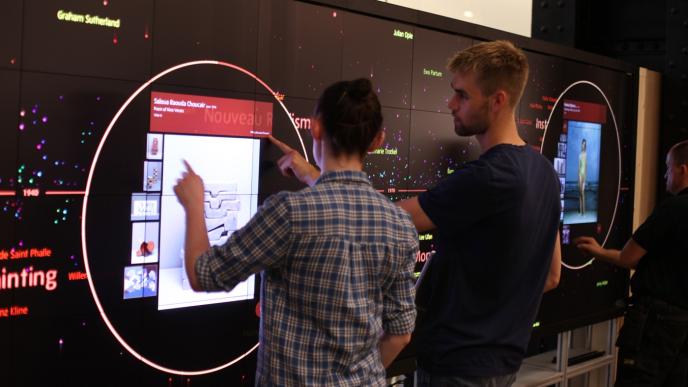
Blank Canvas
The brief formed an exciting prospect for Framestore’s Digital Signage team, fresh from delivering The Stellar Atrium Project at the London Stock Exchange. The potential for the installation was huge, spanning full project management from concept through to delivery of the integrated software and hardware system. Importantly, the look and feel of the installation had to be just right. ‘Being a modern art gallery, we knew we had to produce something for Tate Modern that looked contemporary and beautiful, but was very much usable. With such a large canvas, we really had the space to play around with our ideas’, said Robin Carlisle, Installation Director.
Key Visuals
The timeline’s custom-built software was developed by Framestore’s Tom Schwarz and curated by the team at Tate. Over 3500 works by over 750 artists from Tate’s collection of modern art are represented, with each piece arriving at the point in time it was created on a timeline spanning 125 years. The visual mechanism creates a captivating and hypnotic backdrop to the interactive experience, for visitors to enjoy both up-close and from afar, and key pieces, artists and movements are highlighted, prompting the user to touch to view and explore related imagery, video and information.
Once we’d found out what the interactive kit around the screen could achieve, it was just a case of making the content, and making it beautiful.
Future Works
Overall, the project gave the Digital Signage team huge creative license, and the outcome is not only visually beautiful but truly innovative. ‘Working directly with the team at Tate was a real pleasure, and both teams were always eager to see the timeline develop’, said Framestore Producer Grace Diggens. ‘The gallery is a London landmark, and we are excited to play a part in helping them become a world leader in installation and innovation as they expand in coming years.’
